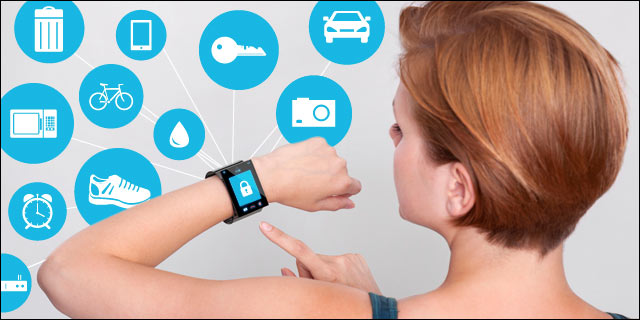 Internet of Things (IoT) seeks to enable things to be connected any time, any place with anything or anyone. The Internet of Things, or IoT, is defined as a worldwide network of “things” that include identifiable devices, appliances, equipment, machinery of all forms and sizes with the intelligence to seamlessly connect, communicate and control or manage each other to perform a set of tasks with minimum intervention. IoT is an ecosystem of everyday’s physical objects connected to the internet and capable of identifying themselves and communicating with other objects in the network. But IoT is more than connecting things
Internet of Things (IoT) seeks to enable things to be connected any time, any place with anything or anyone. The Internet of Things, or IoT, is defined as a worldwide network of “things” that include identifiable devices, appliances, equipment, machinery of all forms and sizes with the intelligence to seamlessly connect, communicate and control or manage each other to perform a set of tasks with minimum intervention. IoT is an ecosystem of everyday’s physical objects connected to the internet and capable of identifying themselves and communicating with other objects in the network. But IoT is more than connecting things
The Internet of Things is all about connected life. We are witnessing that new age gadgets have integrated internet accessing capabilities and hooked them into wired or wireless internet connection. These gadgets are designed for machine 2 machine communication, and also utilize the connectivity with Smartphone, tablet for additional functionality. The data from such devices shared over the telephonic network is stored and accessed by Smartphone and tablet apps.
Countries such as China, US, Germany, and European Union have the highest penetration in the IoT space with Malaysia, Korea, and Japan falling in the mid range. In India, the smart city and digital India campaign will leverage IoT to bring about the changes in addressing and solving problems that large cities are face for becoming smart. Issues such as transport system, parking, lighting, waste management, water management, women safety etc are areas which has highest degree of concern. We will need sensors at strategic points to collect data, application to analyze data and analytics to ensure quick decision making. Digital infrastructure is expected to create huge opportunities for technological companies across the verticals and in key applications within smart cities, smart health, and smart transport. In India, technology visionaries and several startups are flooding the market with smart devices and the intent is on taking this to the next level. Businesses can also reap many benefits from via IoT. For example manufacturers can remotely monitor the condition of equipment and look for indicators of imminent failure – for example vibration, temperature, or pressure outside normal limits. This means that the manufacturer can make fewer visits, reducing costs and freeing up employees. For the customer it means less disruption, increased uptime, and ultimately higher satisfaction. Taking this to the next level, manufacturers can offer a price-per-use, inclusive of all hardware, installation, and servicing.
The Internet of Things is already having its impact on businesses. It offers organisations the opportunity to transform how they operate, and gives both new entrants and established players the ability to innovate and disrupt. Production line monitoring and automation is one of the most mature IoT applications. By connecting production-line systems, manufacturers can move to predictive maintenance, helping to make better use of resources and reducing unplanned downtime. This strategy can improve equipment utilisation and overall plant output. The end-to-end monitoring reduces the chance of loss or theft, and additional sensors can be used to verify that perishable or fragile goods are kept in appropriate conditions and handled properly throughout their journey.
Organisations are seeing measurable benefits by using IoT technology. Transportation companies are saving millions of dollars by reducing fuel consumption using captured data, transmitted, and analysed in near real-time basis. Local governments are allocating budgets to go further with LED smart street lighting that does not need regular maintenance, and can automatically send signals when repairs are required. Utility companies are eliminating costly and inconvenient home visits to read meters by introducing smart meters that report more granular usage data without human intervention. These are just a few examples of the myriad ways in which IoT is making new products, business models, and processes possible.
There are many advantages of incorporating IoT into our lives, which can help individuals, businesses, and society on a daily basis. For individuals this new concept can come in many forms including health, safety, financially, and every day planning. The integration of IoT into the health care system could prove to be incredibly beneficial for both the individual and the society. A chip could be implanted into each individual, allowing for hospitals to monitor the vital signs of the patient. IoT can also function as a tool that can help people save money by making home appliances communicate in an energy efficient way.
In a country like India the growth opportunities for IoT are massive along with its challenges. The government is focused towards incorporating IoT technology for building smart cities as per its developmental plan. India has its own cultural market and structural challenges that can potentially hinder the IoT ecosystem of not implemented in a structured manner as per its policy guidelines. The IoT value chain in India is disconnected and fragmented which needs to be amended. There is a shortage of component players which is a key hindrance for design, testing and development of IoT products in India which would however improve once the overall Eco system of IoT is on the growth path.
About Author

Ashish Gulati representing Telit Wireless Solutions in India as a. Ashish is responsible for the Company’s overall operations in India. He has held this position since February, 2011. Ashish has rich sales & marketing experience of more than 15 years in the semiconductor industry and has been actively involved in M2M market for the past 6 years handling wireless communication products. Prior to joining Telit, he held the senior sales position with a Singapore based company and was responsible for all India sales operations including planning and strategizing to address the key upcoming segments in the market place. Ashish Gulati was born in Delhi, India, in 1974. He completed his Electronics & Communication Engineering, from Karnataka University in 1996.






